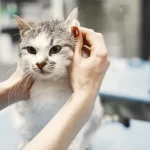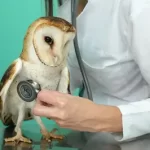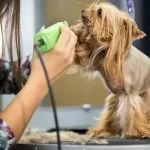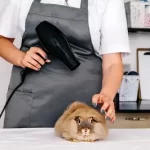Achieving the perfect dog hair style is both an art and a science. With the right dog grooming techniques, you can keep your furry companion looking their best while ensuring their coat remains healthy. Whether you have a Poodle, a Shih Tzu, or a Golden Retriever, understanding your dog’s specific grooming needs is crucial. In this guide, we will take you through everything you need to know about achieving the perfect hairstyle for your dog.
Understanding Your Dog’s Coat Type
Before diving into grooming techniques, it is essential to understand the different types of dog coats. Each coat type requires unique grooming methods to achieve the best results.
1. Short-Haired Dogs
Short-haired breeds like Beagles and Boxers require minimal trimming but still benefit from regular brushing to reduce shedding and promote skin health.
2. Long-Haired Dogs
Breeds like Afghan Hounds and Yorkshire Terriers need frequent brushing to prevent tangles and matting. A layered cut can help maintain a neat appearance.
3. Curly-Haired Dogs
Poodles and Bichon Frises have dense, curly coats that require professional trimming every 4-6 weeks to maintain a well-groomed look.
4. Double-Coated Dogs
Breeds like Siberian Huskies and German Shepherds have a thick undercoat that sheds seasonally. Regular de-shedding treatments can keep their fur manageable.
Essential Dog Grooming Tools
To achieve the perfect dog hair style, investing in the right tools is necessary. Here are some must-have grooming tools:
- Slicker Brush – Ideal for removing tangles and loose hair.
- Deshedding Tool – Helps reduce excessive shedding in double-coated breeds.
- Clippers and Scissors – Essential for trimming long-haired dogs and creating stylish cuts.
- Nail Clippers – Keeps your dog’s nails at a healthy length.
- Shampoo and Conditioner – Ensures a clean and shiny coat.
Step-by-Step Guide to Grooming Your Dog
1. Brushing the Coat
Brushing is the foundation of effective dog grooming. It removes dirt, distributes natural oils, and prevents tangles. Follow these brushing tips:
- Use a slicker brush for curly and long-haired dogs.
- Brush in the direction of hair growth.
- For double-coated dogs, use an undercoat rake to remove dead fur.
2. Bathing Your Dog
Bathing frequency depends on your dog’s breed and activity level. Follow these steps for an effective bath:
- Use lukewarm water to prevent discomfort.
- Apply dog-specific shampoo to maintain coat health.
- Rinse thoroughly to avoid skin irritation.
- Finish with a conditioner for dogs with long or curly hair.
3. Drying Techniques
Proper drying prevents matting and skin infections. Here’s how to do it right:
- Use a towel to absorb excess moisture.
- A low-heat blow dryer can help with fast drying.
- For curly-haired dogs, use a diffuser attachment to maintain their curl structure.
4. Trimming and Styling
Once your dog’s coat is dry, you can begin trimming. Some popular dog hair styles include:
- Teddy Bear Cut – A round, fluffy face for breeds like Poodles and Shih Tzus.
- Lion Cut – Popular for Pomeranians, this style leaves more fur around the head and tail.
- Puppy Cut – A simple, even trim for easy maintenance.
- Top Knot – A stylish look for long-haired breeds like Maltese and Lhasa Apsos.
Use sharp grooming scissors for precision trimming and clippers for an even cut.
5. Nail Trimming and Paw Care
Keeping your dog’s nails trimmed prevents discomfort and joint issues. Follow these tips:
- Use dog-specific nail clippers or a grinder.
- Trim small amounts to avoid cutting the quick.
- Apply paw balm to keep pads moisturized.
6. Ear and Eye Cleaning
Regular cleaning prevents infections and ensures your dog remains comfortable.
- Use dog ear wipes to remove dirt and wax buildup.
- Gently wipe around the eyes with a damp cloth to remove tear stains.
Grooming Frequency by Breed
Different breeds require different grooming schedules. Here is a general guideline:
- Short-haired breeds – Brush weekly, bathe every 6-8 weeks.
- Long-haired breeds – Brush daily, bathe every 4-6 weeks.
- Curly-haired breeds – Brush every other day, trim every 4-6 weeks.
- Double-coated breeds – Brush twice a week, seasonal de-shedding.
Professional Grooming vs. At-Home Grooming
While at-home grooming is cost-effective, professional groomers offer specialized services that may be challenging to achieve at home. Consider professional grooming if:
- Your dog has a complex coat type.
- You want a breed-specific dog hair style.
- Your dog is anxious or uncooperative during grooming.
Final Thoughts
Regular dog grooming is essential for your pet’s health and appearance. Whether you groom your dog at home or rely on a professional, maintaining a consistent routine will ensure your furry friend looks and feels their best. By using the right tools and techniques, you can achieve the perfect dog hair style that complements your pet’s breed and personality.





